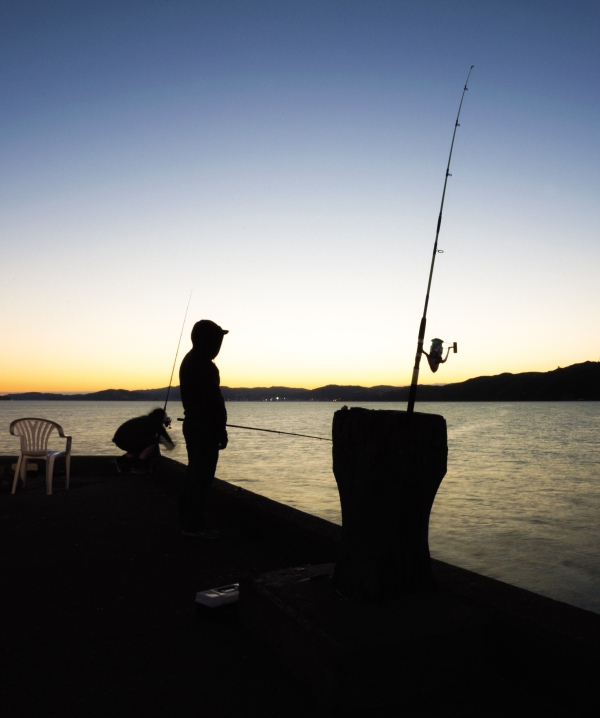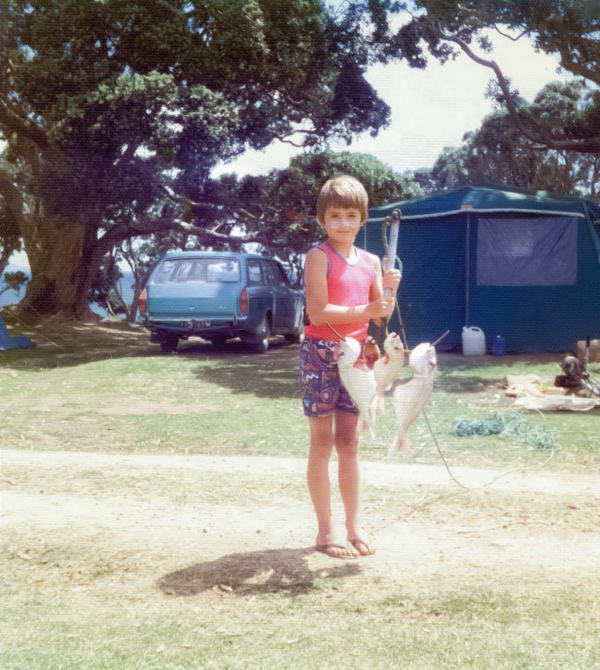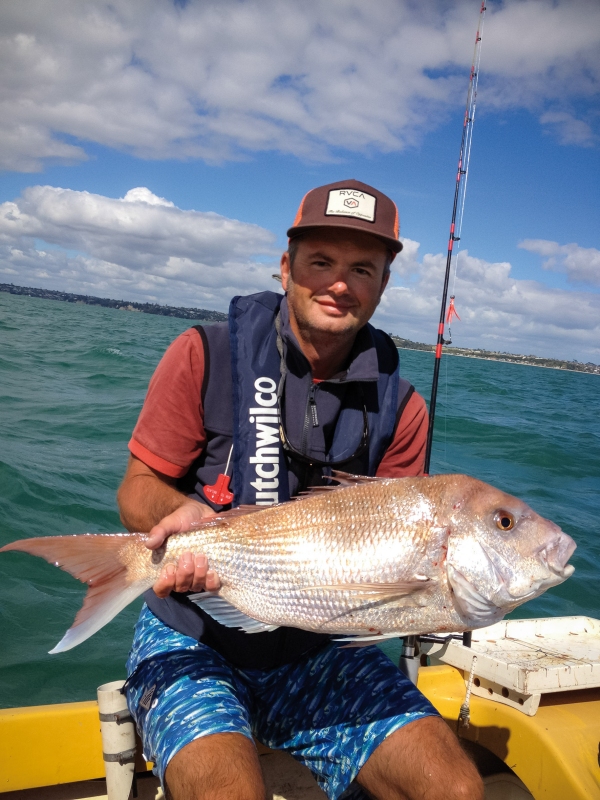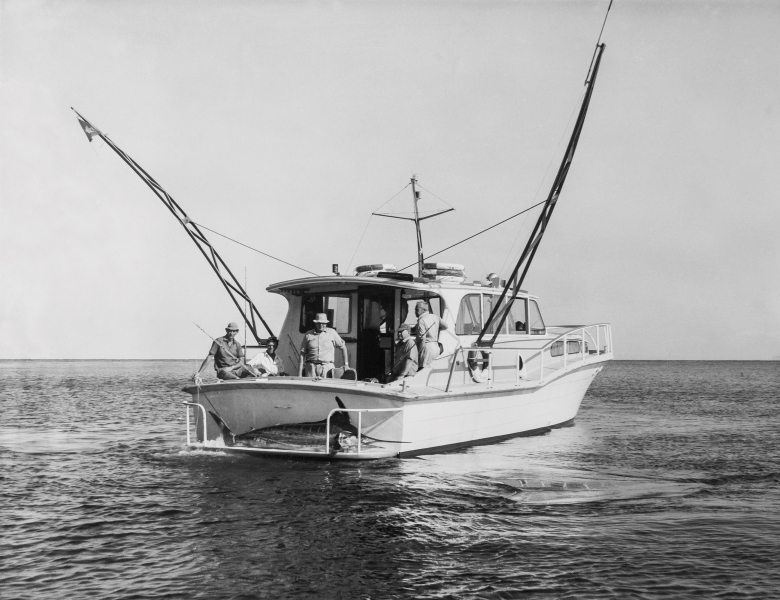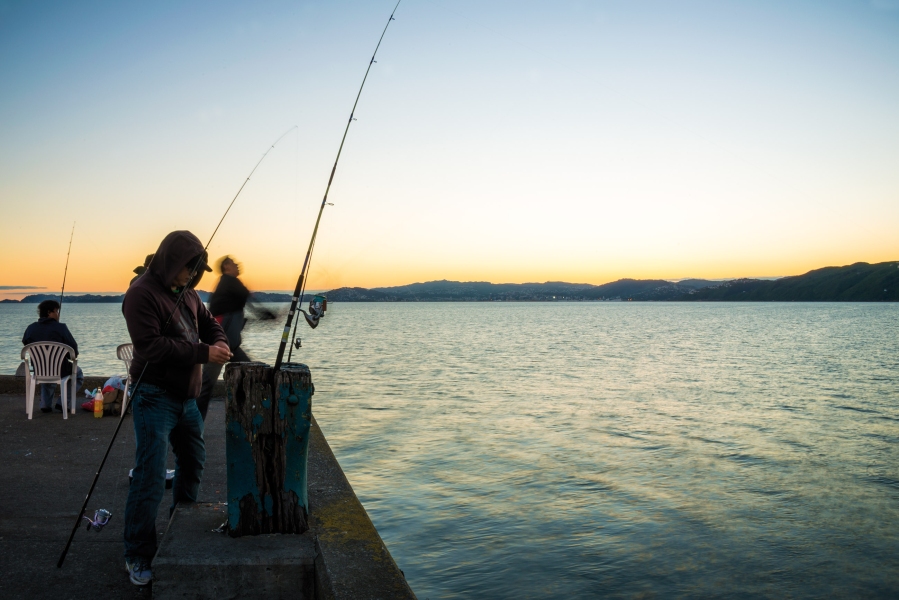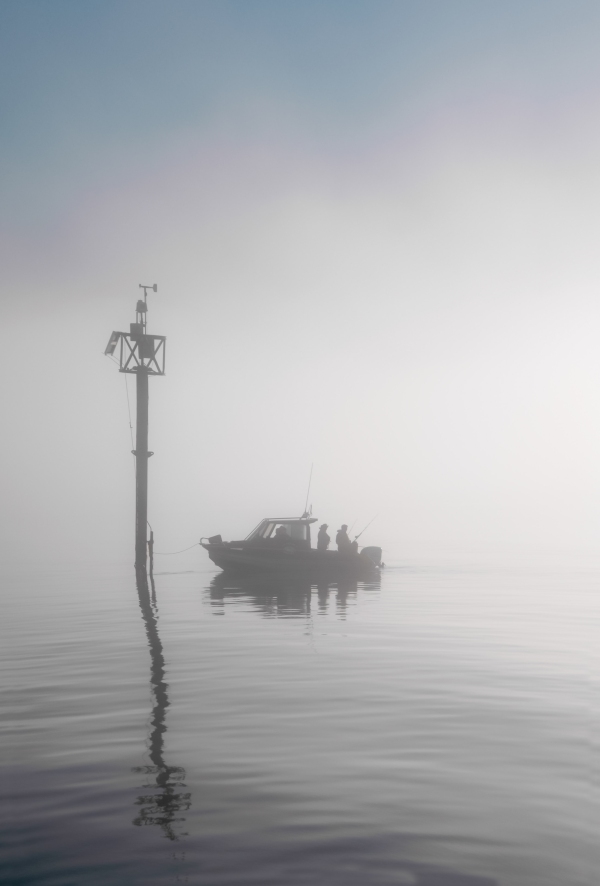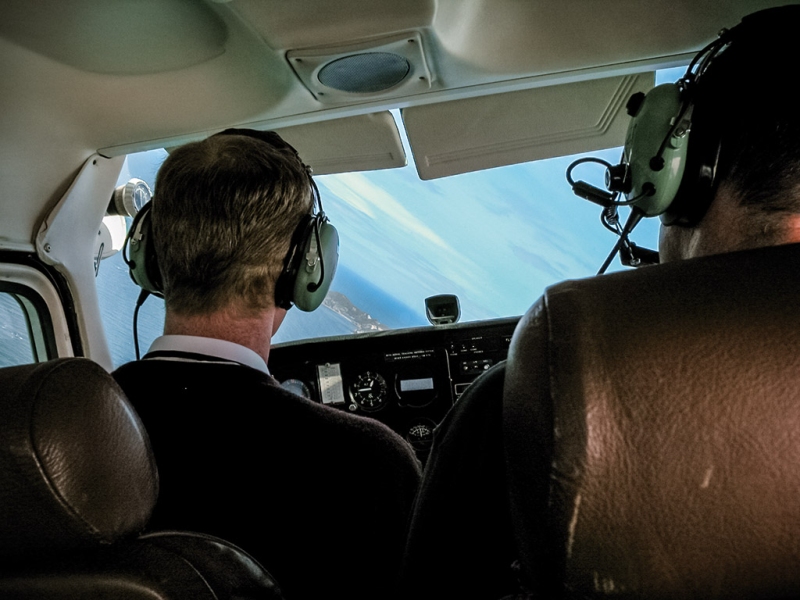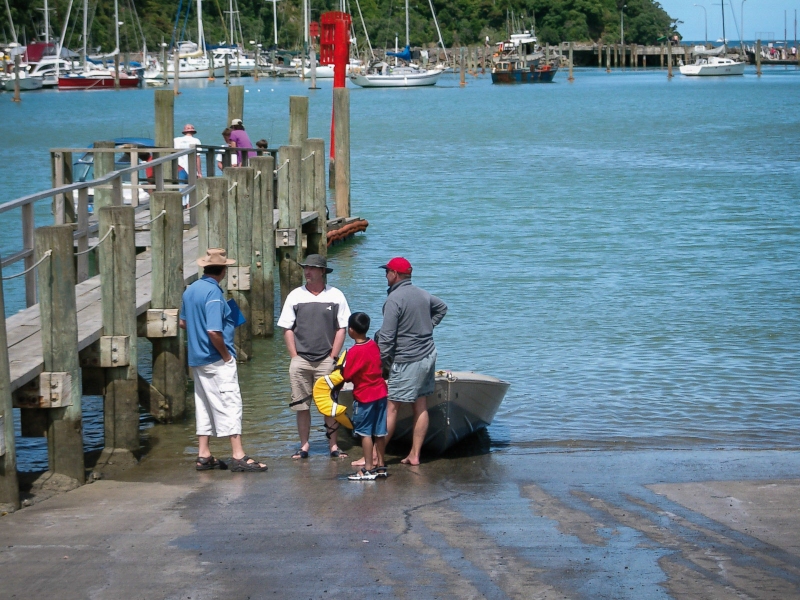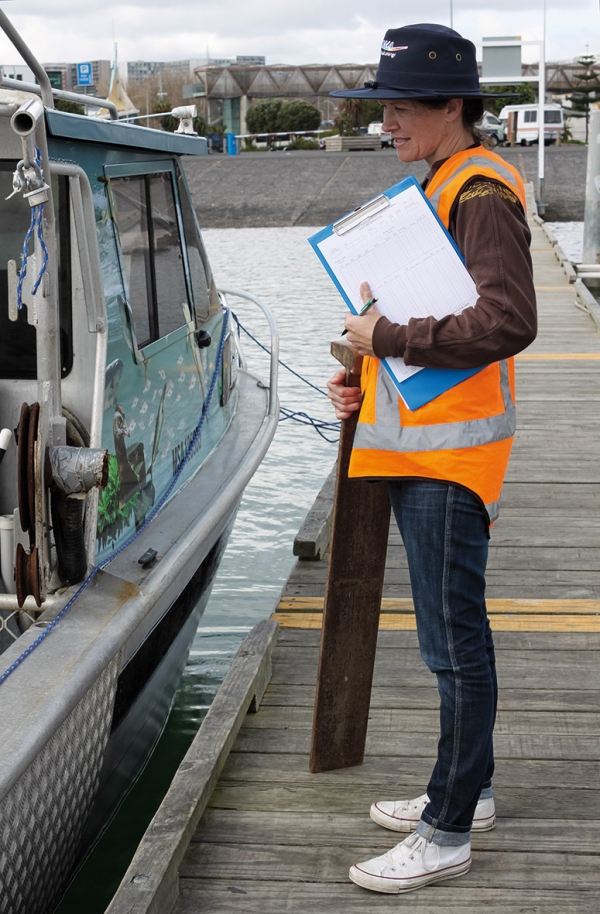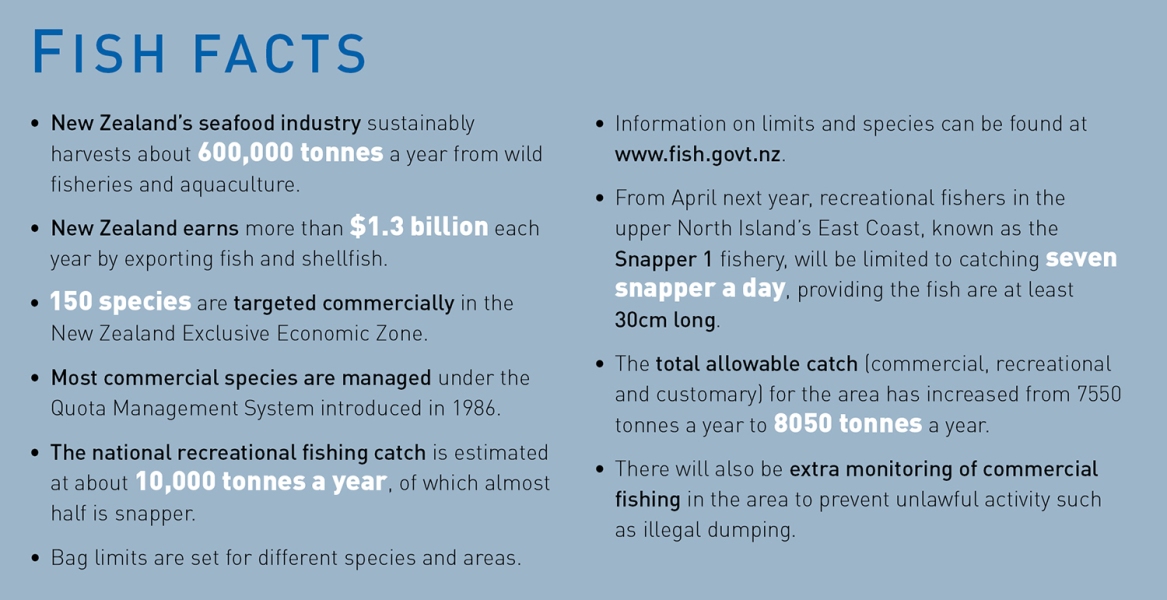Recreational fishing is so good in New Zealand that around 600,000 Kiwis regularly have a reel in their hand. Susan Pepperell discovers how technology is helping those who fish and those who count the fish.
The best thing about fishing, says a man virtually born with a rod in his hands, is not the fish you do catch, but the anticipation of those you might.
"Setting off from the beach just before dawn in the cool air of a late-summer's day full of hope – it's a sort of magic. And, if you're lucky, then comes the sizzling run of a good snapper in the shallows ...".
Fishing, reckons Lester Thorley, runs in his family genes. In fact his parents received a telegram on the occasion of his birth that read: "Congratulations, another fisherman."
"All I know is that by quite a young age I would happily sit on a wharf and fish all day. I got my first rod about 1973 – a light blue Kilwell Imp."
Thorley's love of fishing was fostered by "lots of formative years out there doing it". Today it still keeps him enthralled. The Thorley family fish the hugely popular Waitemata Harbour, around the shallow waters of Half Moon Bay in their small runabout or dinghy.
Over the years, Lester and his father Malcolm have kept fishing diaries, a record of catches, conditions and methods used. They indicate fairly stable fishing in the past decade in the inner Waitemata – and Thorley's best ever: a 5kg snapper caught last summer in shallow water not far from his Howick home.
This winter, when debate over possible reduced snapper quotas for recreational fishers was at its peak, Thorley took note, but realised the full picture eluded him. He is a fisherman whose main concern is that there are fish around for future generations, and that the distribution of the resource is fair. But he says it's difficult for the average person to understand the principles of quota management and the science around estimated fish stocks.
"There are also a lot of stories about what commercial fishing used to be allowed in the Hauraki Gulf and what it is now. It would be good to know the facts around it all, because myths carry a lot of weight in these kinds of public debates."
That hardly comes as a surprise to Bruce Hartill. He is one of New Zealand's leading recreational fisheries scientists, based at NIWA's Auckland office where he has developed methodology to estimate the number of fish caught by recreational fishers.
Although almost all fisheries science in the 1980s and 1990s focused on commercial aspects of fisheries that are managed under the Quota Management System, there has been an increasing awareness of the potential impact that recreational fishers can also have on major inshore fish stocks. This has resulted in a concerted effort to understand the nature and extent of the recreational catch over the past 10 years.
Hartill quotes figures of an estimated 600,000 active fishers in New Zealand, including a 'hardy core' of between 40,000 and 50,000 people who are 'really keen'. It is one of our most popular pastimes, with websites for anglers attracting thousands of followers and hundreds of thousands of viewers tuning into numerous TV fishing programmes. The ITM Fishing Show alone, which screens on a Saturday afternoon, consistently rates in the top five of TV3's most watched programmes.
Then there are the technological advances in rods and reels and the plethora of gadgets available to assist novice and experienced fishers pinpoint their prey. From the modern bling of luminous beads and rubber skirts on hook rigs to fluorocarbon traces, ceramic rod guides and fish finders, there has rarely been a sport with more enticing extras to help get the job done.
The documented history of recreational fishing in New Zealand is not nearly as extensive as that of trout fishing, or even big game fishing which gained notoriety in the late 1920s with the publication of United States writer Zane Grey's bestseller Tales of the Angler's Eldorado, New Zealand.
In scientific terms, reliable information on the sport is only just moving out of its infancy. Ministry for Primary Industries (MPI) began its North Island recreational fishing research programme in 2003, at a time when there was growing recognition in government of its scale.
"Although there were bag and size limits, there was a real concern about the lack of information on catch from the recreational sector," says Hartill.
In the 1990s the Ministry of Fisheries (now MPI) commissioned a few isolated phone surveys and small studies on recreational fishing, each covering limited geographical areas, but by the end of the decade the information produced was largely determined to be unreliable or inadequate for management purposes.
The Ministry started afresh and contracted NIWA to develop new methods. What was needed was reliable information on how many fish were being caught, where, when, what type and by whom.
Estimating the recreational harvest has involved the development of mathematical models, which are based on data gathered from aerial surveys, boat ramp interviews and web camera images. The main focus for this research is the area around the top half of the North Island, where most recreational fishing occurs.
The first aerial surveys were undertaken in 2004, alongside concurrent boat ramp surveys, to estimate the recreational harvest of snapper and kahawai taken from the Hauraki Gulf. These techniques have since been further refined and applied over larger areas. It is a costly exercise, but it provides the best way to directly observe and quantify the amount of recreational fishing taking place over vast areas.
The last survey, in 2012, involved four planes working between the North and East Capes, counting fishing boats at midday with boat positions recorded by GPS plotters. Survey days are selected at random from throughout the year, over the summer and winter, and on weekdays and at weekends.
Data from the aerial surveys are used to scale up fisher interview data collected at a sample of ramps. Fishers returning from sea were asked where and when they were fishing and which methods they used, and their catch was counted and measured.
The harvest estimates provided by this survey for a few key fish stocks were remarkably close to those provided by a completely independent but concurrent national survey approach conducted by the National Research Bureau, suggesting that the survey methodology used by NIWA provides reliable and accurate estimates.
The strength of the data Hartill and his team have built up over the past decade lies in its ability to detect trends over time.
"We are doing much more regular surveys now, using standardised survey methods. We're in what I'd call 'the big data phase'. We used to do isolated surveys – the results would be published and people would forget about it. Now we're starting to look across the surveys to gain a better understanding of the changes to our recreational fishery."
In 2004, the first web cameras were also installed at boat ramps scattered around the upper North Island, again part of a Ministry of Fisheries project. The cameras record one image each minute, 24 hours a day. Scientists then randomly select 60 days, view the images and count the number of boats returning to the ramps, feeding the data into their models.
There are eight cameras now, with another four going in around the lower North Island in the near future.
And while Hartill says it is a shame they will never have the data to understand the past, they are now able to look beyond immediate needs and think long term.
"Fishery managers need to understand the trends, and we're starting to get to the stage of understanding changes over time. Trends are incredibly important." Recent data have shown that the recreational catch of snapper in the Hauraki Gulf has increased by over 50 per cent in the past seven years, and these fishers now take more than the commercial fishery in the same area.
Information on the trend and magnitude of the recreational harvest is combined with data on commercial fisheries and fish biology in a stock assessment model, which is used to predict the status of the fish stock and how it can be sustainably fished in the future. NIWA stock assessment scientists Jeremy McKenzie and Chris Francis have recently completed an assessment of New Zealand's largest snapper stock: the SNA1 stock off the northeast coast of the North Island. It was the first assessment of this fishery in 13 years and the work was undertaken for MPI.
In addition to the Hartill recreational harvest estimates, the assessments take into account commercial, Māori (customary) and other historical catch information, catch and effort data, tagging data, data from scientific sample voyages, and other biological information that are all input for sophisticated mathematical models. The models estimate trends in stock size over time and can predict the effect of varying catches in the future.
The latest assessment helped inform recent changes in MPI management of the Snapper 1 fishery, with a Government announcement in September that the catch limit would be reduced from nine to seven snapper a day, and the fish caught had to be at least 30cm long – up from 27cm.
Meanwhile, Hartill is working with other NIWA scientists to develop a website for fishers that will help them understand the complex business of fish life cycles, how fish interact with their environment and how understanding the habits of recreational fishers will help achieve sustainable fishing grounds far into the future. It should be completed within the next six months.
He acknowledges that scientists and fishers need to improve their communication with each other.
"There is recognition among scientists that for us to be relevant we have to be seen to be relevant and get information out there in a very digestible form.
"Recreational fishers are a diffuse lot and we need to do more to engage with them. This website will hopefully get information out there so people can have faith in what we're doing."
Meanwhile, Thorley will be launching his boat over summer from a convenient beach to avoid overcrowding at boat ramps – particularly Half Moon Bay.
If he has any advice for fishers, it's to limit their catch to what can be thoughtfully used.
"We normally take our limit, because we don't go out that often, and share fish with elderly neighbours and family members and friends who aren't able to catch fresh fish – or perhaps can't afford to buy it. That is always an incredibly rewarding end to a successful day on the water.
"And be careful with the release of small fish – use a damp towel and handle them gently."

